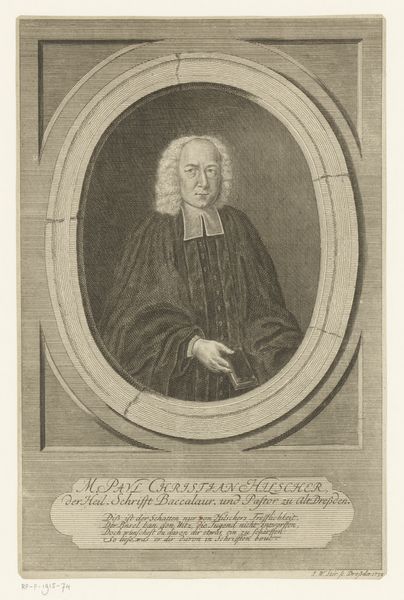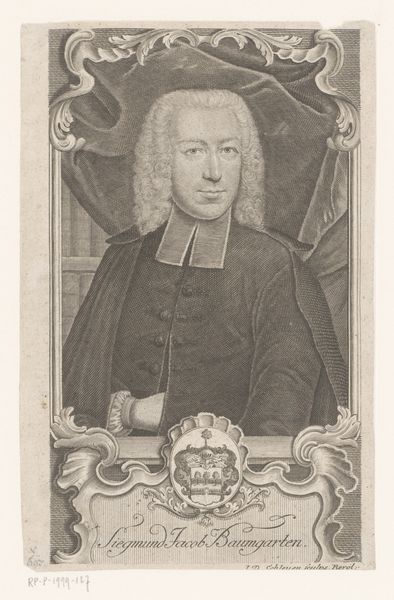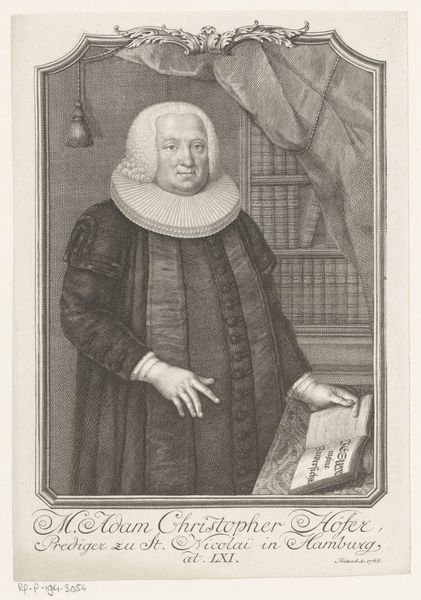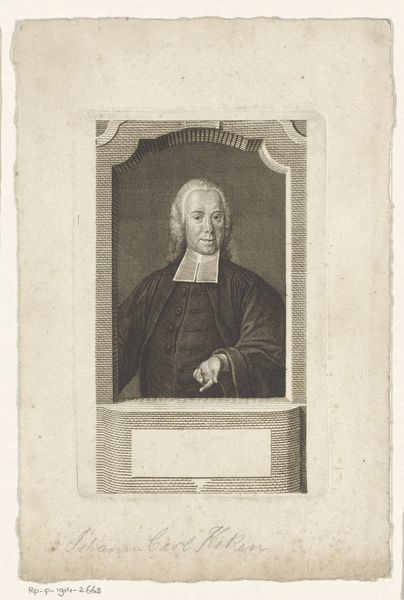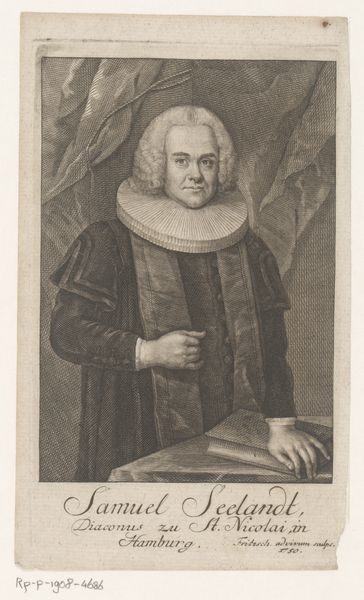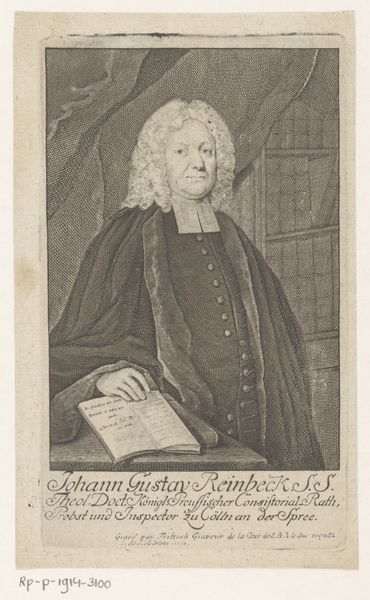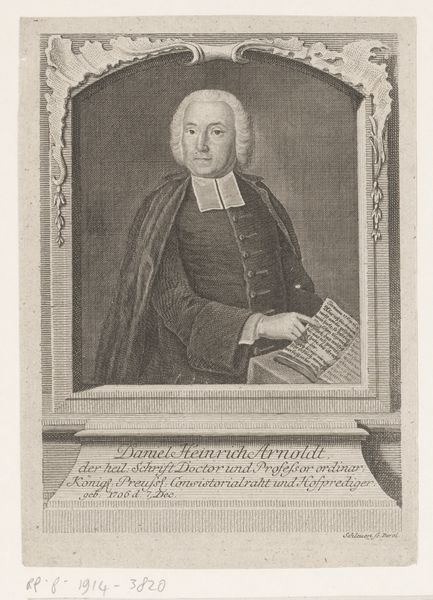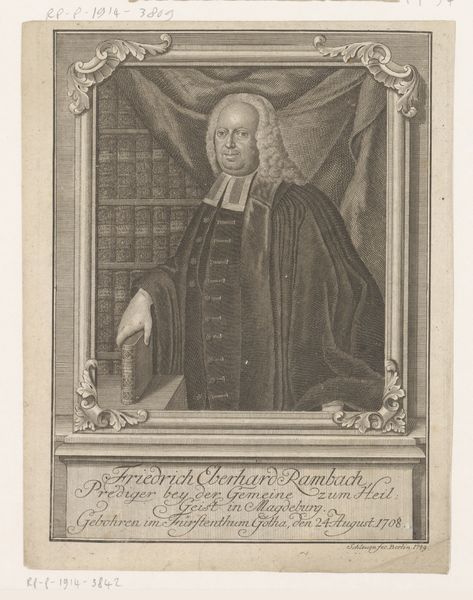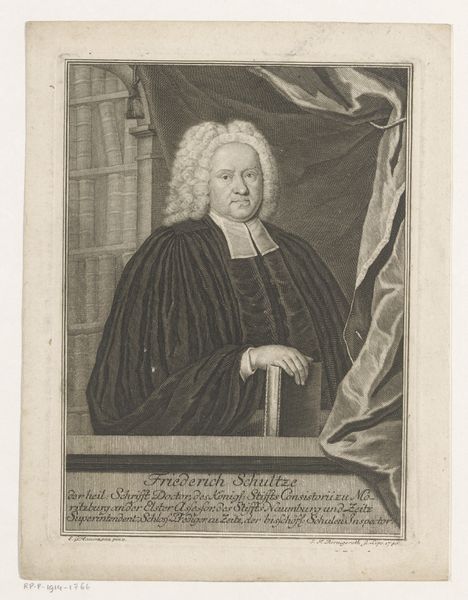
engraving
#
portrait
#
baroque
#
history-painting
#
academic-art
#
engraving
Dimensions: height 161 mm, width 104 mm
Copyright: Rijks Museum: Open Domain
Curator: Here we see Johann Friedrich Schleuen's 1743 engraving, "Portret van Melchior Gottlieb Minor." What’s your immediate reaction to this work? Editor: I'm immediately struck by a sense of formidable presence, almost stern. It radiates a confidence rooted in power. The subject, presumably Minor himself, commands attention, doesn't he? The overall grayscale makes the piece somber and heavy. Curator: It's a striking image. The portrait makes strong use of Baroque stylistic elements – observe the subject’s billowing wig and the rich drapery behind him. Both are symbols of status, intended to evoke awe and admiration for the sitter’s position and authority. The arrangement is formal, symmetrical... iconic, really. Editor: True. But that symmetry feels almost like a constraint. I am drawn to that confident posture, and how it clashes with a background of ecclesiastical duty. Who was Melchior Gottlieb Minor, and how does that background impact the way we interpret this image? Curator: Melchior Gottlieb Minor was a Royal Prussian Church and School Inspector, and a primary pastor in Landeshut. This portrait commemorates that position and aims to embed him in the cultural memory of his community, representing piety, learning, and governance. The books are telling, don't you think? Editor: The books do point to the kind of man Schleuen wanted to portray—a pillar of faith and education, a man who could wield influence. I wonder though: What was it like to live under his spiritual and educational command? Was that influence beneficent, or stifling? The image, while technically impressive, risks celebrating power without interrogating its effects. Curator: An interesting counterpoint. To consider the reception history is important. Yet within the iconographic language of the time, Schleuen presents us with symbols of stability and authority. The artist crafts an image of an important figure through established codes. Editor: Codes that might simultaneously empower some, while marginalizing others. A reminder to continually scrutinize who is included and excluded from historical narratives. Looking closer, I feel that Melchior embodies this duality of control with his clerical status and clothing as it frames his face. The face suggests there might be conflict with inner ideals and an exterior display of societal rules that Minor's position implies. Curator: Precisely. This portrait offers a point of entry to discuss 18th century power dynamics—faith, education, and portraiture serving as the image. Editor: Leaving me with a renewed consideration of representation—its responsibilities and its potential blind spots.
Comments
No comments
Be the first to comment and join the conversation on the ultimate creative platform.
